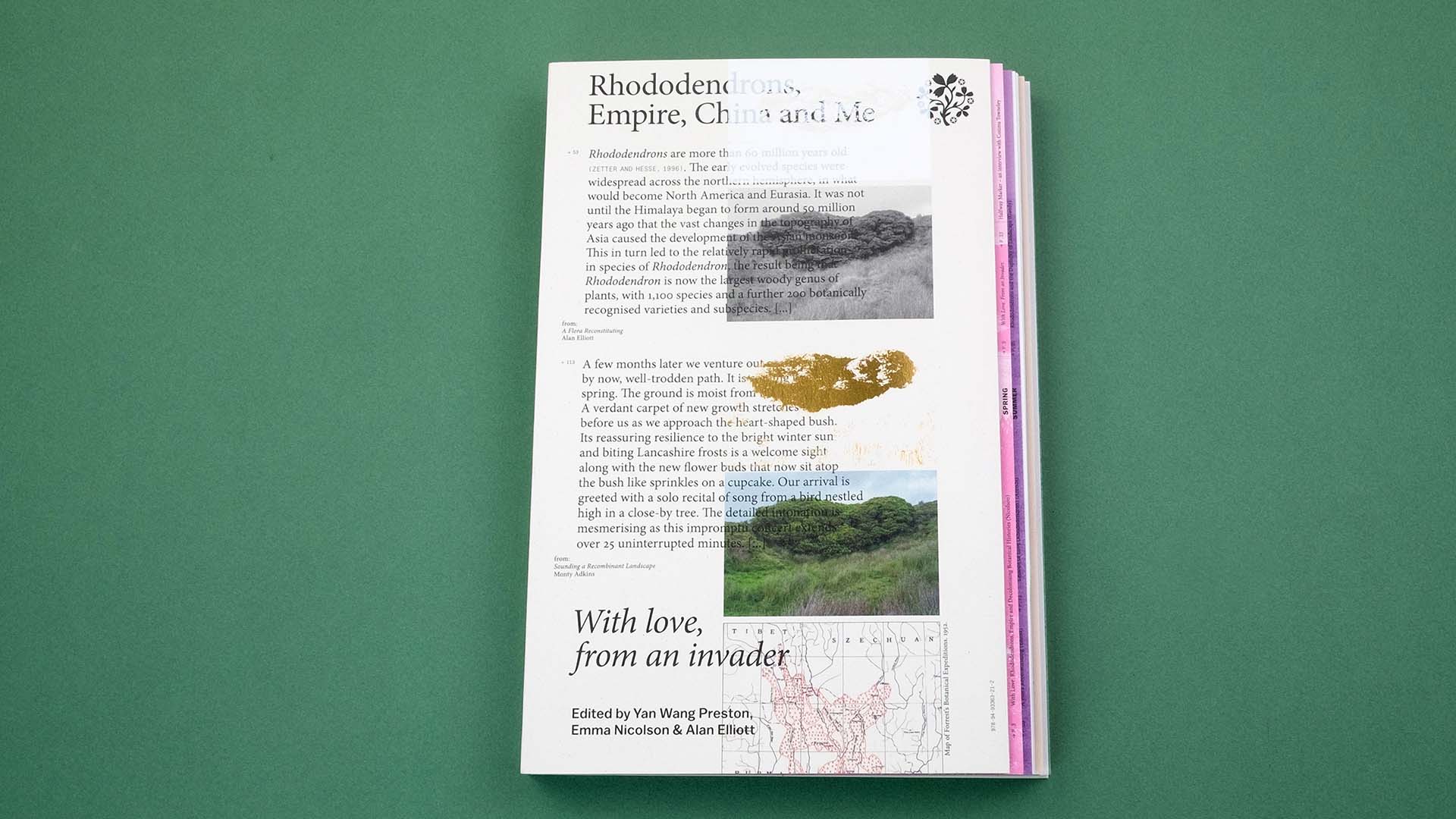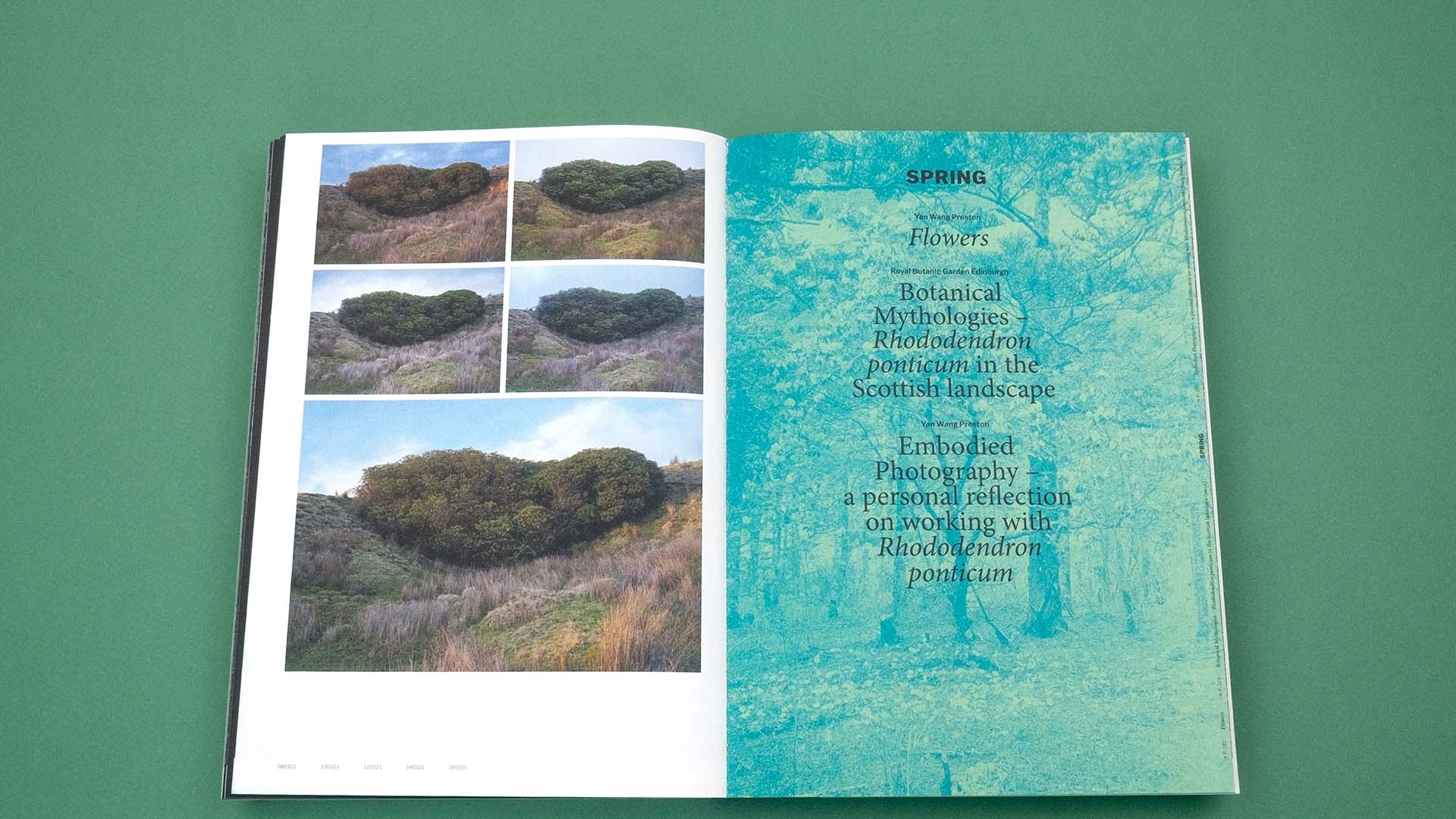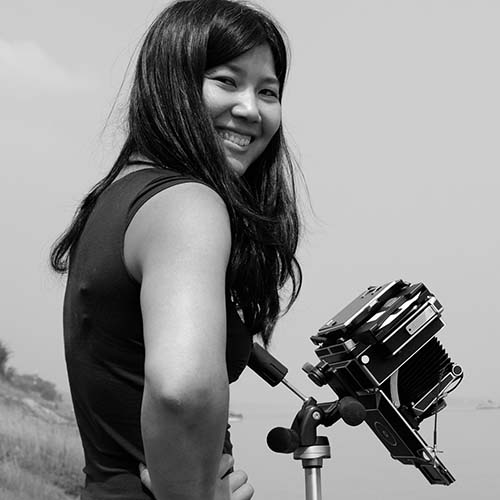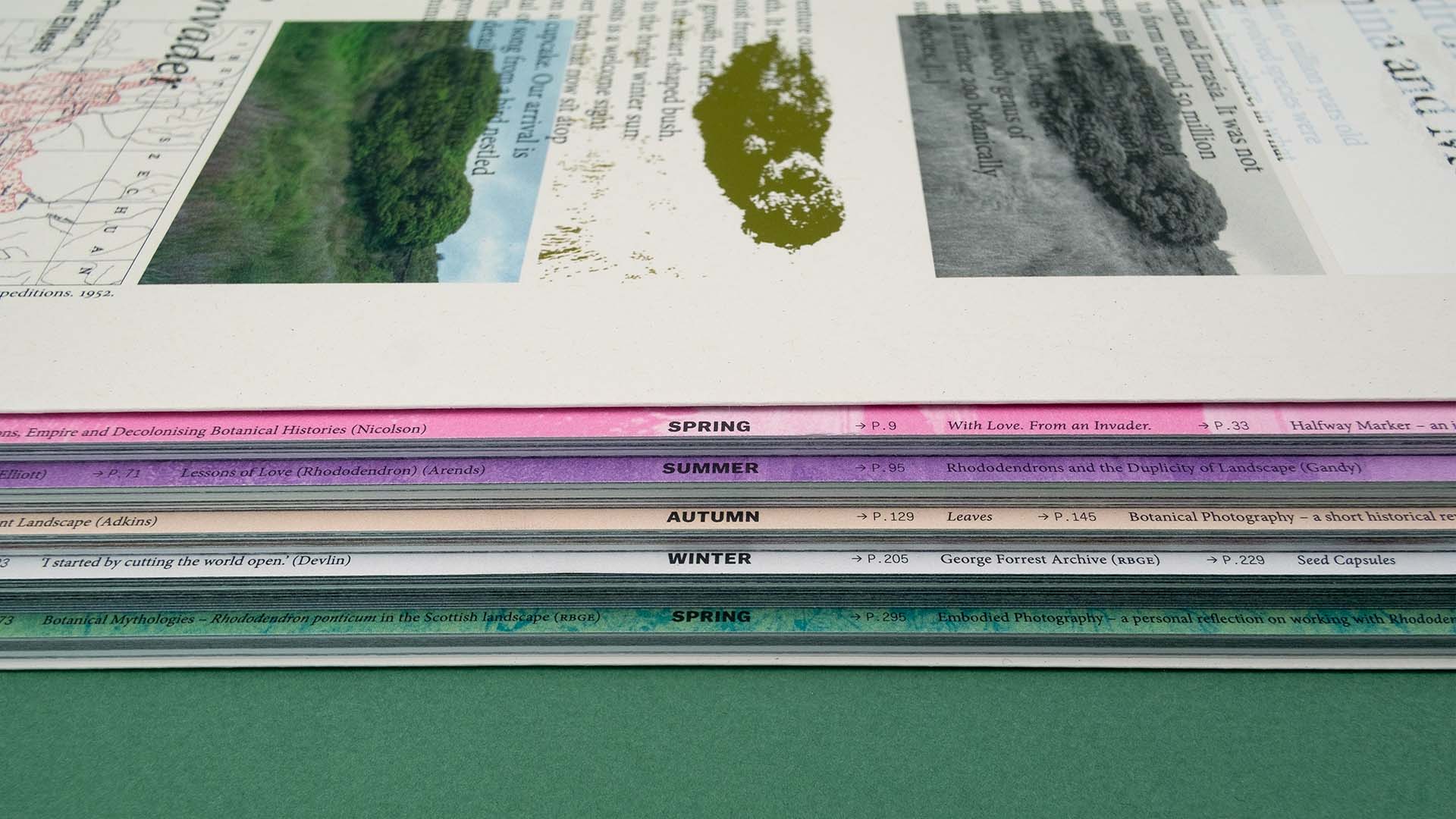Innovative book draws art, science and nature together

A lavish new book by Dr Yan Wang Preston, senior lecturer in photography, has drawn parallels between migration, national identity and ecology by showing a year in the life of a rhododendron bush on the moors of Lancashire.
With Love. From an Invader. – Rhododendrons, Empire, China and Me, edited by Dr Wang Preston with Emma Nicolson and Dr Alan Elliott, not only features 183 photos of a heart-shaped rhododendron near Burnley taken from March 2020 to the following March, but also essays, poetry plus wildlife and flora photography.
Dr Wang Preston also collaborated with the University’s Pro Vice Chancellor for Research and Innovation, Professor Monty Adkins, on a video-audio installation that drew upon sounds recorded on the moors near Sheldon Clough. Their installation, exhibited by the Royal Botanic Garden Edinburgh in 2022, inspired the evolution of the book recently published, on recycled materials, by The Eriskay Connection.
Study Photography at the University of Huddersfield
Rhododendrons were introduced to the UK from Spain in the 18th Century, but more than half of the 1,100 species originated in China. Although most are much-loved garden plants, the most-widespread one, Rhododendron ponticum, is often classified as a non-native invasive species and a major threat to native UK plants.

But Dr Wang Preston saw the plant, initially welcomed but now seen as something to be hated and removed, as a metaphor for both human and non-human migrants in the UK.
Her work presents the ecological benefits and cultural significance of the Rhododendron ponticum, though photos of the shrub taken throughout the seasons and also the astonishing array of wildlife, including deers, badgers and foxes, which has flourished around it.
“There has been so much said and written about the Rhododendron being an invasive non-native, a threat to the national ecology and landscape,” says Dr Wang Preston.

Dr Yan Wang Preston
Senior lecturer in photography
“There is a perceived sense of what a British ecology should be, which is full of native species but that’s completely wrong. The British Isles are a land of migrants since the end of the Ice Age."
“The book also highlights the interdisciplinary nature of the whole project using art, science and nature in a thought-provoking way. The book launch in Edinburgh was attended by the Natural History Museum’s marine biology curator, the art and exhibitions manager from Kew Garden and National Museums Scotland’s director so hopefully these flagship institutions may think about how they can work with artists more.
“We really are in an age where art and science must work together to make the world a better place. With the publication of this book, we have already put ourselves in a leading position in interdisciplinary research because our project has already been seen as a model.”
Contributors to the book include Professor Adkins and fellow editors Emma Nicolson, Head of Visual Arts at Creative Scotland, and Dr Alan Elliott, Biodiversity Conservation Network Manager at RBGE. It also includes extensive archival material from the RBGE and features an innovative design that provides an immersive and intimate reading experiences with an easy-to-navigate system separating the diverse contents into five seasons.

“The book is beautiful to look at, easy to handle yet absorbing to read,” Dr Wang Preston adds. “I’ve learned so much from books myself, because you spend a lot of time with them and can go back to them rather than an exhibition, which may only be experienced once. It is totally nature to reach the finale of this project by making it into a book.”
“I wanted to make a book that doesn't just contain information. I wanted to make a book that people want to pick up and read because it's beautiful.”
Dr Wang Preston’s project has been backed by the University’s Impact Accelerator Account’s Impact Fund.